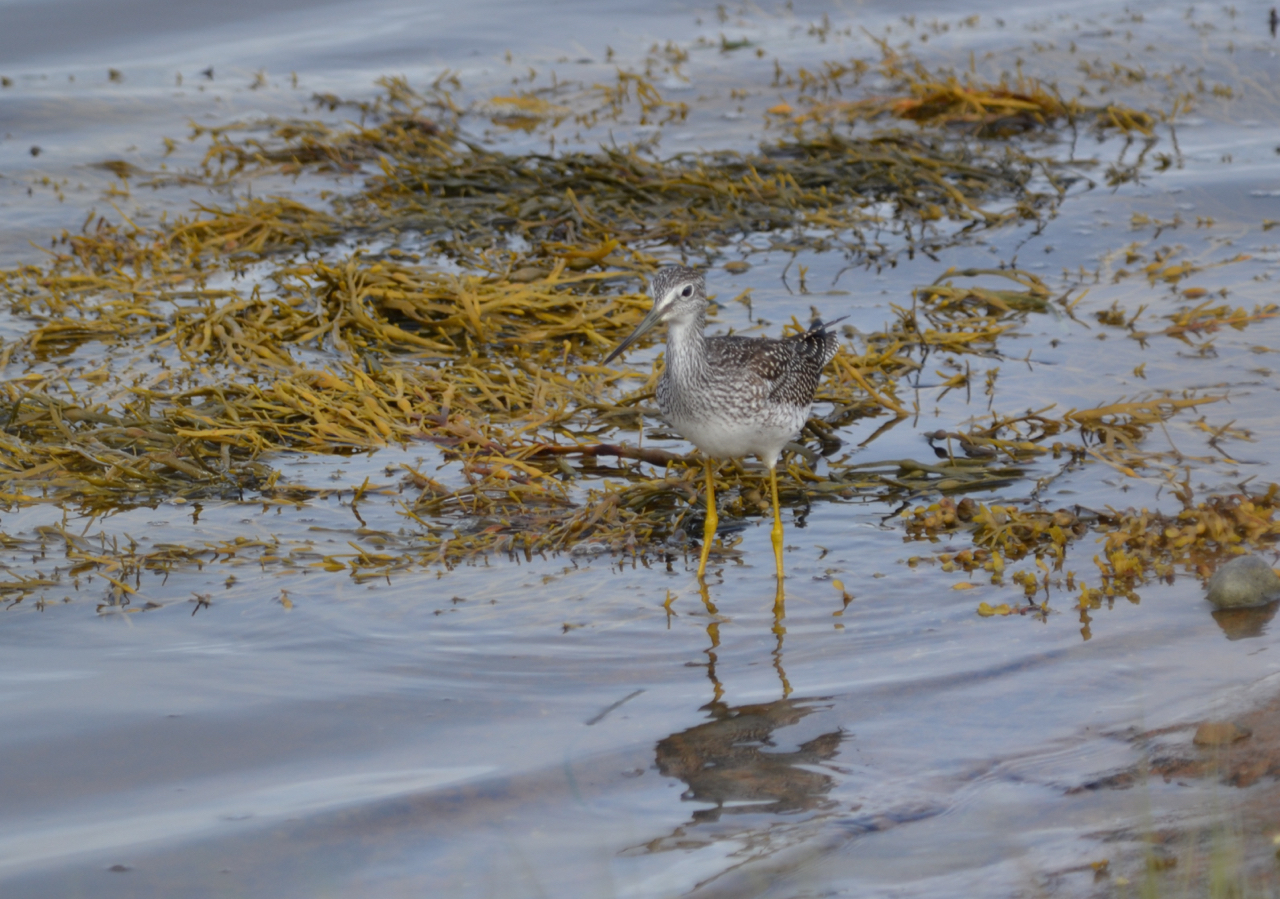by Catherine Schmitt, Kyle Lima, & Seth Benz
Shorebird migration is upon us, as the plovers, sandpipers, and other sand- and mud-feeding birds leave their breeding grounds in the north for points south. Among the largest of the migrants are the yellowlegs, which are two species, Greater Yellowlegs and Lesser Yellowlegs.
These birds were familiar to the student naturalists of the Champlain Society. Charles Townsend shot 13 “telltale” at Bass Harbor on August 21, 1880. A few Greater Yellowlegs were observed on the Cranberry Isles in August 1881, when Henry Spelman “shot snipe, yellow-legs, & a few peep” in the little marsh on the southwest side of Little Cranberry.
In 1927, Marion Pellew listed only the Greater Yellowlegs, described as “common in August,” but historical records include observations throughout the fall and as late as November.
Today both are still common in and around Acadia, according to eBird observations and our recent work with Landscape of Change.

